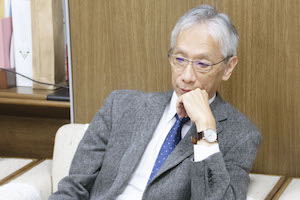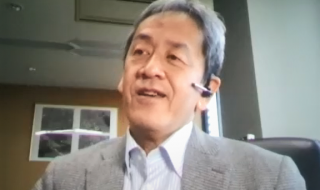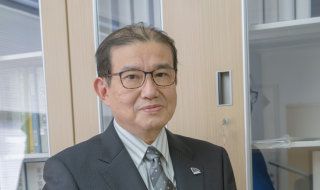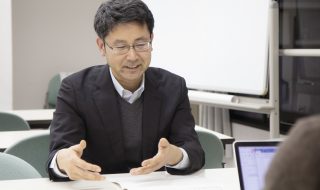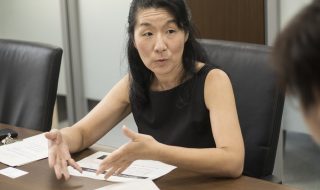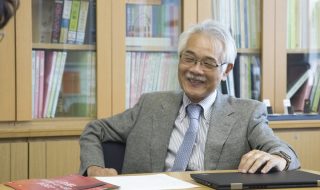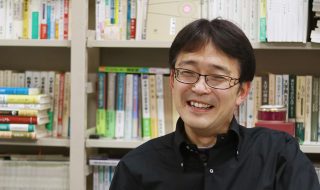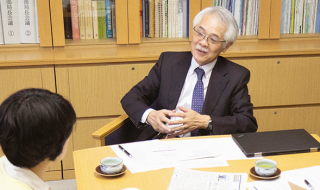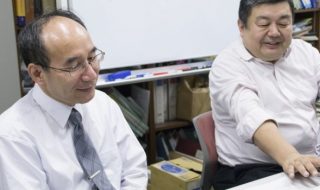The Faculty of Agriculture ranks among Japan’s largest and is rich in diversity
The Faculty and Graduate School of Agriculture comprise a diverse range of disciplines. What difficulties do you encounter when administering the faculty and graduate school?
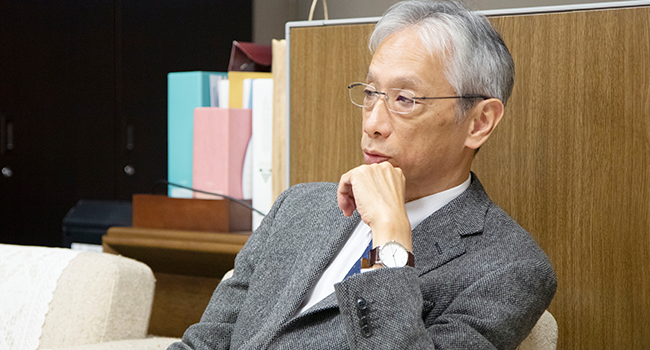
The Faculty of Agriculture at Kyoto University has a capacity of 300 students. This is the largest among Japanese national universities, with the University of Tokyo’s having 290 students. As such, our departments have about 100 laboratories. Most of them are located in the Faculty of Agriculture Main Building, which is the largest building on the Yoshida Campus. The laboratories differ in specialization and aim for different goals, but, humorously, agree at least to share the building.
Diverse disciplines are pursued at the Faculty of Agriculture. Education is also provided in diverse ways. For instance, one department makes a substantial number of courses compulsory, while another offers no compulsory course. One department makes capstone research compulsory for graduation, while another doesn’t. You may have an impression that Faculty of Agriculture students conduct exercises and experiments abundantly. However, some students graduate after receiving only classroom lectures, never being affiliated with a laboratory. You used the word administer. It can be used to describe management. Education-wise, there is indeed no way to administer the faculty.
The Faculty of Agriculture has six departments, and the Graduate School of Agriculture has seven divisions. In what way are they linked?
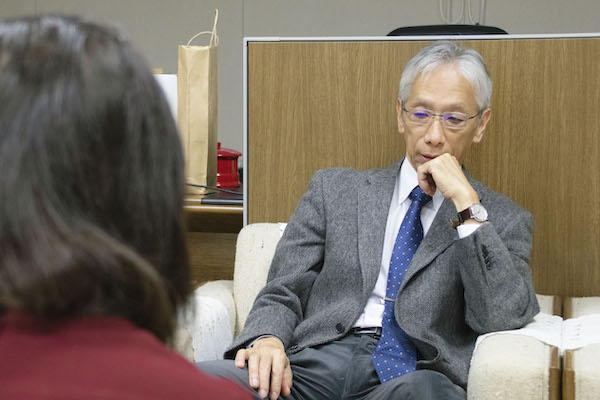
First of all, the departments substantially vary in size. The largest is the Department of Bioresource Science, which has nearly 100 students each year. The Department of Forest and Biomaterials Science and the Department of Applied Life Sciences have about 50 students each. The remaining departments of Agricultural and Environmental Engineering, Food Science and Biotechnology, and Food and Environmental Economics have nearly 40 students each. Students of the largest Department of Bioresource Science are divided into the laboratories of several supervisors according to their majors when they become fourth-year students. By contrast, some departments equal the students’ majors. While prospective students take a unified entrance exam to the Faculty, enrolled students are affiliated with their respective departments. Some students opt to stay in their departments while taking many courses taught in other departments, to major in a field other than their departments’ when they become graduate students. Moreover, some students choose the Graduate School of Biostudies or the Graduate School of Global Environmental Studies because instructors teach at these schools in addition to the Faculty of Agriculture.
What things are made clear by developing course trees and the three policies
The curriculum is very complex.
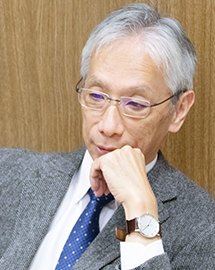
When developing course trees, we renewed our awareness of the systematic and hierarchical structure of the curriculum. We developed a course tree for each department. I think this gives students a better view of relations between courses than they had before.
Regarding the three policies, the admission policy clearly states qualities of desired students. For instance, it states that for prospective students applying for the specialty admissions program, the Department of Food Science and Biotechnology welcomes those who, after graduation from the college, will be enrolled in master’s and doctoral programs, will earn a doctoral degree, and will be active internationally after completing graduate school.
Regarding the diploma policy (DP), a questionnaire survey is given to Graduate School of Agriculture students when they complete graduate school. Since academic year 2017, the questionnaire has asked students about their attainment levels regarding the requirements set forth in the DP. For both master’s and doctoral programs, the DP sets forth four requirements each. Using a four-level grading scale, the proportion of students with score 4 (very satisfactory) ranks from about 30% to a little bit higher than 50%. These students and those with score 3 (satisfactory) together account for approximately 90% of students with regard to all requirements, excluding the requirement of “sufficient foreign language skill that will enable them to disseminate their research results worldwide” set forth in master’s program students’ DP. With this requirement, students scoring 4 account for about 20%, and those scoring 2 (not satisfactory) also account for about 20%. In this regard, there is room for improvement.
Active international exchange
The Faculty and Graduate School of Agriculture endeavor to promote international exchange as well.
Currently, program-level exchange agreements number 64 for academic exchange and 63 for student exchange (some overlapping). Partners are in Asia (accounting for about two-thirds), Europe, North America, and more. It appears that among the faculties and schools at Kyoto University, we are active in sending Japanese students to foreign universities and receiving foreign students. Meanwhile, at the institutional level, I personally devoted a lot of energy to agreements with colleges in India. Currently, six agreements have been signed, of which I have taken part in five. Students from India are exceptional, partly because they are motivated to set themselves up through studies, while identifying themselves with India. More campus-wide efforts could be made to receive students from India.
Another feature of the courses offered at the Graduate School of Agriculture is the Special Program in Agricultural Sciences set up under the Global 30 Project for master’s and doctoral students. Students can study this course in English.
On future FD
Lastly, could you say a word or two about the organizational FD and support for it?
The FD seminar/workshop is held annually. More than 80 faculty members attend it. The Faculty of Agriculture employs various forms of classes, including fieldwork and experiments. Knowing what teaching methods are available, including those for classroom lectures, is very helpful. I think providing such training will increase the number of interested instructors.

Photographed by: Ryohei KIZAKI (Assistant Teaching Staff, Center for the Promotion of Excellence in Higher Education, Kyoto University)
(Recording day: November 28, 2019)
List of Interviews


